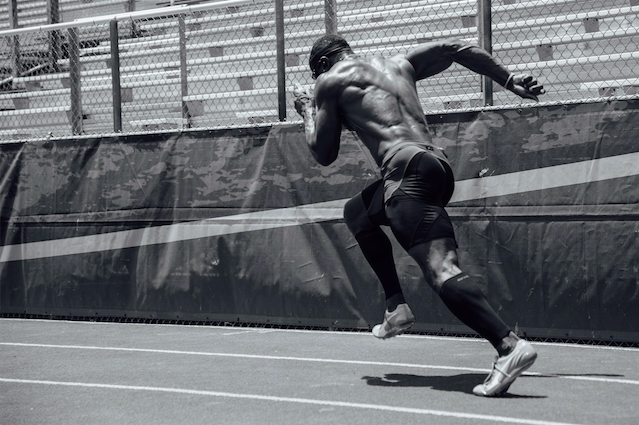When it comes to muscles that are important for sprint performance, the muscles of the lower body come to mind first. In fact, posterior chain strength—primarily erector spines, glutes, hamstrings, and secondarily calves—is directly related to an athlete's sprint time. In particular, the back chain is crucial for a quick start, ie the first 0-5m, which is so important especially in team sports.
But a sprint does not live from the legs and the rear chain alone. Other factors also play a role. So does the strength of the latissimus and the elbow-flexing muscles. Acceleration starts from the upper body. Time-motion analysis of sprinters shows that elbow flexion initiates the sprinting motion by flexing the elbow milliseconds in front of the hip and knee.
Too little power output from the elbow flexors can limit the power in the posterior chain, which is so important for sprint speed and jumping power. Thus, upper body strength, and especially elbow flexor capability, is critical for anyone looking to run fast.
Upper body strength is also critical to maintaining good sprint mechanics. The upper body counteracts the twisting generated by the lower body. The latissimus - and not the abdominal muscles as is usually assumed - as the largest and strongest rotator and anti-rotator of the trunk, has the task of stabilizing the trunk during sprinting. In an elite sprinter, when marked with a laser pointer, the navel moves just a few centimeters to the left or right over a distance of 100m. The less trunk movement, the less energy is lost and the more energy is transferred to the ground, which in turn improves sprint times.
You don't get a stable core and strong arms from bodyweight stability exercises, crunches, or lat pulldowns. The reason for this is primarily that these exercises only expose the muscles to relatively low forces, which are too small compared to the high forces generated during sprinting. Variations of pull-ups with additional weight, curls and other upper body exercises are the methods of choice to gain more upper body strength and thus a more stable core. A lower body workout with exercises like squat and deadlift variations will do its part to make the core even stronger and more stable.
If you look at the upper body development of today's top sprinters, it's obvious that they spend a lot of time in the weight room. Use this advantage as well and improve your sprint performance through intelligent strength training of your upper body.
Good luck with upper body training for faster sprints!
More about optimizing sprint speed at the YPSI Sprint & Power Seminar with Sven Knipphals on May 2nd and 3rd in Leipzig.
Picture: 110m hurdles sprinter Jon McDowell opened his own personal training studio VIVE in Dallas, Texas, USA this year and attended 5 YPSI seminars in Santo Domingo, Brussels and Stuttgart. His upper body development impressively demonstrates which musculature and thus strength in the upper body is necessary to sprint fast.

